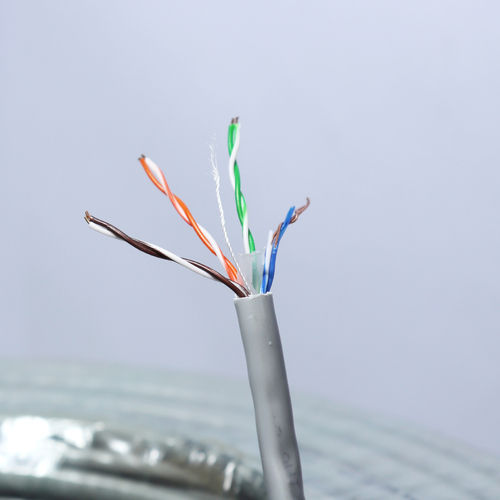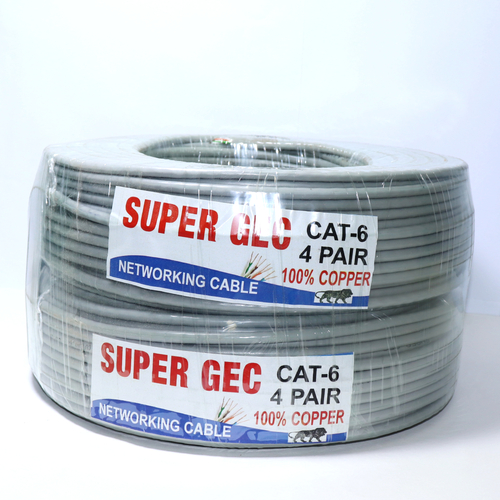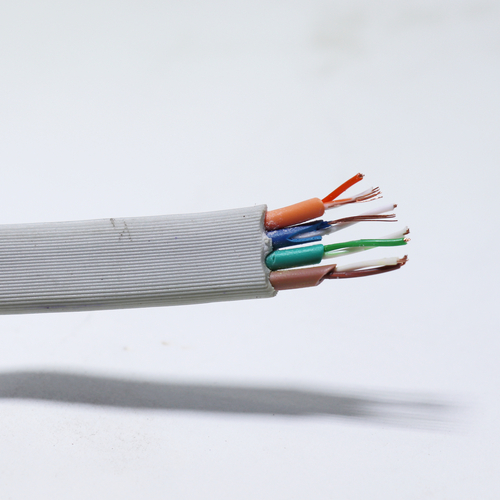CAT-6 Networking Cable Copper (305 MTR)
5683 INR/Roll
Product Details:
- Product Type CAT-6 Networking Cable Copper IP Camera
- Material Cooper
- Function Networking Cable
- Usage Home & Domestic Industrial
- Insulation Material PVC/ COPPER
- Conductor Material Copper
- Length 300 Meter (m)
- Click to View more
X
CAT-6 Networking Cable Copper (305 MTR) Price And Quantity
- 5683 INR/Roll
- 1 Roll
CAT-6 Networking Cable Copper (305 MTR) Product Specifications
- Networking Cable
- PVC/ COPPER
- Copper
- 300 Meter (m)
- Cooper
- 300 MTR
- Grey
- Home & Domestic Industrial
- CAT-6 Networking Cable Copper IP Camera
CAT-6 Networking Cable Copper (305 MTR) Trade Information
- 5000 Roll Per Month
- 1-7 Days
- Yes
- Free samples available with shipping and taxes paid by the buyer
- All India
Product Description
| Networking cables are essential components for establishing wired connections between devices in computer networks. They come in various types, each suited for different purposes: Ethernet Cable (Cat5e, Cat6, Cat6a, Cat7): These cables are commonly used for local area networks (LANs) and connect devices like computers, routers, switches, and access points to each other and to the internet. Cat5e supports speeds up to 1 Gbps, while Cat6 and above support higher speeds and better performance. Fiber Optic Cable: Fiber optic cables use light signals to transmit data and are known for their high bandwidth and immunity to electromagnetic interference. They are used for long-distance connections and in environments where high speed and reliability are crucial, such as data centers and telecommunications networks. Coaxial Cable: Coaxial cables are often used for cable television (CATV) and broadband internet connections. They consist of a central conductor surrounded by a layer of insulation, a metallic shield, and an outer insulating layer. Coaxial cables offer decent bandwidth and are suitable for both residential and commercial applications. Twisted Pair Cable: Twisted pair cables are composed of pairs of insulated copper wires twisted together. They are commonly used in telephone systems and Ethernet networks. Twisting the wires helps reduce electromagnetic interference from external sources, improving signal quality. USB Cable: While primarily used for connecting peripherals like printers, scanners, and external storage devices to computers, USB cables can also be utilized for networking purposes in certain scenarios, such as setting up direct connections between computers or connecting to specialized network devices. |
Enter Buying Requirement Details








 Send Inquiry
Send Inquiry Send SMS
Send SMS Call Me Free
Call Me Free